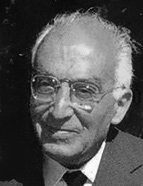

The image of the decadence of his hometown contrasted with the image that the young medical student gleaned from medieval documents: the representation of a ‘warrior’ Penela, the scene of nationally significant events such as the Christian reconquest. The fruits of his interest in historical research can be seen in articles published in the Gazeta de Coimbra [Coimbra Gazette]– ‘ A batalha de Ourique: hipótese da sua localização no Chão de Ourique, Penela ’ [‘The battle of Ourique: hypothesis of its location in Chão de Ourique, Penela’] (1931) – or in the periodical Novo Horizonte – ‘ Esboços históricos: I – Da aldeia, depois vila de Ansião: notas sobre as CincoVilas ’ [New Horizon- ‘Historical sketches: I- From the village, then town of Ansião: notes on the Five Villages] (1932).
However , SDA did not just write texts in which he raised his voice in protest or revealed glorious pasts. He had the initiative to promote cultural dynamism based on historical memory.
In 1937, the eighth centenary of the granting of the medieval charter to Penela was celebrated, and he proposed commemorating the founding event of the municipality. Once the idea was accepted by the Town Council, he was invited to give a lecture. He accepted, perplexed: ‘Being a student, wearing an academic gown, and giving a lecture necessarily involves a paradox.’ In his published text – Penela: notas acerca dum centenário [Penela: notes on a Centenary] (1937) – he presented remarkable episodes of the town of Penela, from Roman times to the 16 th century, highlighting his conception of H istory: ‘To look back on what has happened is not, therefore, merely an attitude of nostalgia: it is to understand the raison d ’ être of what exists, it is to understand the psychology of a people. In short, it means realising that you are a link in a chain, identical to millions of chains, between the past and the future – f rom the moonlit night to the dawn that accompanies the projection of life’ (Arnaut, 1937, p. 19). Moved by love for his homeland, he celebrated the past with an eye to the future, animated by a strong commitment to preserving its identity and cultivating its historical memory.
This work is financed by national funds through FCT - Foundation for Science and Technology, I.P, in the scope of the projects UIDB/04311/2020 and UIDP/04311/2020.
